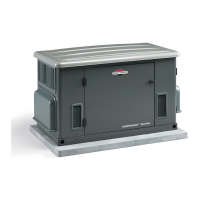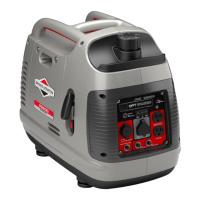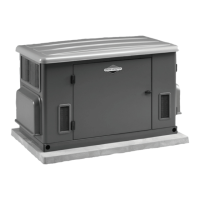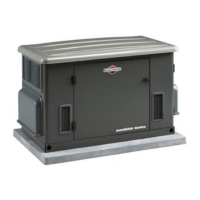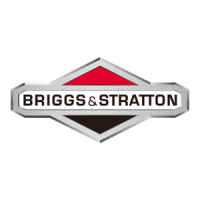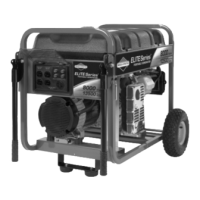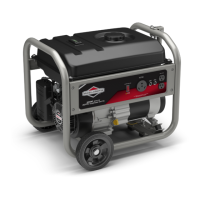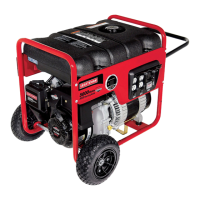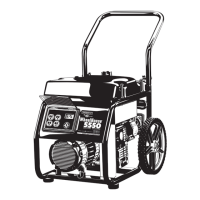Don't Overload Generator
Capacity
You must make sure your generator cansupply enough
rated (running) and surge (starting) watts for the items you
will power at the same time. Follow these simple steps:
1. Selectthe itemsyou will power at the same time.
2. Total the rated(running) watts of these items. This is
the amount of power your generator must produce to
keepyour items running. Seethe table on the right.
3. Estimatehow many surge (starting) watts you will need.
Surge wattageis the short burst of power neededto
start electric motor-driven tools or appliancessuch asa
circular saw or refrigerator. Becausenot all motors start
atthe sametime, total surge watts can be estimatedby
adding only the item(s) with the highest additional surge
watts to the total ratedwatts from step 2.
Example:
Toolor Appliance
WaterWell Pump
Refrigerator
FurnaceFan
Television
Light (75 Watts)
Running(Rated)
Watts
1200
700
800
500
75
3275 Total
RunningWatts
Total Rated(Running) Watts
HighestAdditional Surge Watts
Total GeneratorOutput Required
AdditionalStarting
(Surge) Watts
21O0
2200
2350
2350 Highest
Starting Watts
= 3275
= 2350
= 5625
Power Management
To prolong the life of your generatorand attacheddevices, it
is important to take carewhen adding electrical loadsto your
generator. Thereshould be nothing connectedto the
generator outlets before starting its engine.The correct and
safe way to manage generator power isto sequentiallyadd
loads asfollows:
1. With nothing connected to the generator,start the
engine asdescribed in this manual.
2. Plug in andturn on the first load, preferablythe largest
load you have.
3. Permit the generatoroutput to stabilize (engine runs
smoothly and attached deviceoperates properly).
4. Plug in andturn on the next load.
5. Again, permit the generatorto stabilize.
6. Repeatsteps 4 and 5 for eachadditional load.
WattageReferenceGuide
Running* Additional
Tool orAppliance (Rated) Starting
Watts (Surge)
Watts
Essentials
Light Bulb - 75 watt 75 --
FurnaceFanBlower- 1/2 HP 800 2350
Sump Pump- 1/3 HP 800 1300
Refrigerator/Freezer 700 2200
Water Well Pump - 1/2 HP 1000 2100
Heating/Cooling
Window AC - 10,000 BTU 1200 3600
Humidifier- 13 Gal 175 --
CentralAC- 24,000 BTU 3800 11400
Kitchen
Microwave Oven- 1000 Watt 1000 --
CoffeeMaker 1000 --
Electric Stove - 8" Element 2100 --
Toaster 850 --
Family Room
DVD/CDPlayer 100 --
VCR 100 --
Stereo Receiver 450 --
Color Television- 27 in 500 --
PersonalComputer w/17 in 800 --
monitor
Other
Security System 500 --
AM/FM Clock Radio 100 --
GarageDoor Opener- 1/2 HP 875 2350
ElectricWater Heater 4700 11700
DIY/JohSite
Quartz HalogenWork Light 1000 --
Airless Sprayer- 1/3 HP 600 1200
Reciprocating Saw 960 --
Electric Drill - 1/2 HP, 5.4 Amps 600 900
Circular Saw - 7-1/4 in 1400 2300
Miter Saw- 10 in 1800 1800
TablePlaner - 6 in 1800 1800
TableSaw/RadialArm Saw- 10 in 2000 2000
Air Compressor - 1 HP 1600 4500
NEVERadd more loads than the generatorcapacity.Take
special careto consider surge loads in generator capacity,as
described above.
* Wattageslisted are approximate only. Checktool or
appliancefor actual wattage.
14 BRIGGSandSTRATTON.COM
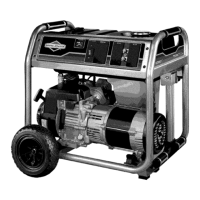
